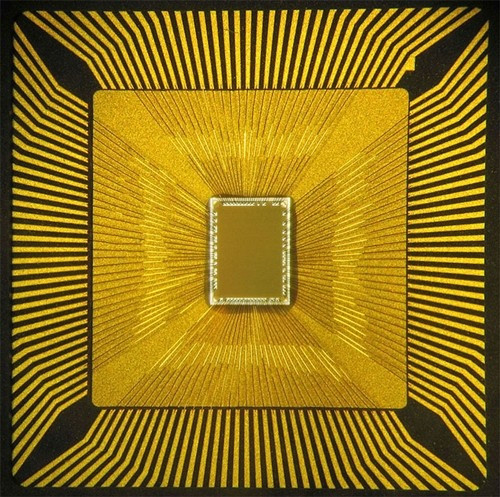IBM Develops Brain-Like Chip: It Might Beat You at Pong, Researcher Says

With one of the world's largest research laboratories and more patents held than any U.S.-based technology company, IBM is deploying its expertise in the attempt to accomplish the unthinkable: developing a chip to mimic the human brain.
Armonk, N.Y.-based IBM recently unveiled its first generation of chips designed to respond like the human brain, three years after the company partnered with several universities for the research. The company and the universities were awarded a grant for the research by America's Defense Advanced Research Projects Agency (DARPA).
What I hold in my hand as I speak, said IBM Research project leader Dharmendra Modha, in an interview with CNET, is our first cognitive core that combines computing in the form of neurons, memory in the form of synapses, and communications in the form of axons ... [and] in working silicon, and not PowerPoint.
Established in 1961, IBM's Watson Research Center is the largest industrial research organization in the world, with eight labs in six countries.
IBM says its new chip comes closer than anything done before at replicating the human brain, a breakthrough considering the system is capable of rewiring its connections as it encounters new information the same way the biological synapses of a human brain would.
IBM's SyNAPSE system uses two protype neurosynaptic computing chips, the company said. Each has 256 computational cores. Scientists describe those as the electronic equivalent of neurons.
One chip has 262,144 programmable synapses. The other has 65,636 learning synapses.
IBM researchers feel that by replicating the rewiring connections feature, the company's patented technology could eventually start similar to how humans learn -- applying new information and experiential information to evolved thinking.
Synaptic connections between brain cells in humans and animals physically connect themselves depending on experience in the world. Learning is a process of forming and strengthening these connections.
The project at IBM has involved hundreds of researchers and $41 million in federal government funding from DARPA. Currently, the chips have the ability to adapt to different types of information that wasn't originally programmed as an expectation.
While it's not yet at a level near the capacity to process and adapt like the human brain, the technology holds the potential of an additional major-breakthrough.
Already, IBM's prototype chips -- called unprecedented by the company -- can give mind-like abilities to computers to make decisions by collating and analyzing large amounts of data, similar to how humans gather and understand a series of events, said Modha.
The company's experimental chips were modeled after human neural systems.
In today's computers, there are some key fundamental limitations that are projected to come to an end, Modha said. The ever-increasing clock rates are unsustainable. In contract, the brain is an ultimate computer.
We now have the seeds of a new architecture that can allow us to mine the boundary between the physical and the digital world in an ever more efficient way.
Modha said in an interview with John Roach, a contributing writer at msnbc.com, that the chips can drive a car through a simple maze and reconfigure a triangle from just a fragment.
It can also play Pong, the 1970s arcade game and, It might beat you. I don't promise, but it might, Modha said.
Modha told Roach the next step is to take these tiny brain-like circuits and weave them into a system that eventually has 10 billion neurons and 100 trillion synapses that consume just 1 kilowatt of power and occupy the same volume as a shoebox.
© Copyright IBTimes 2024. All rights reserved.





















